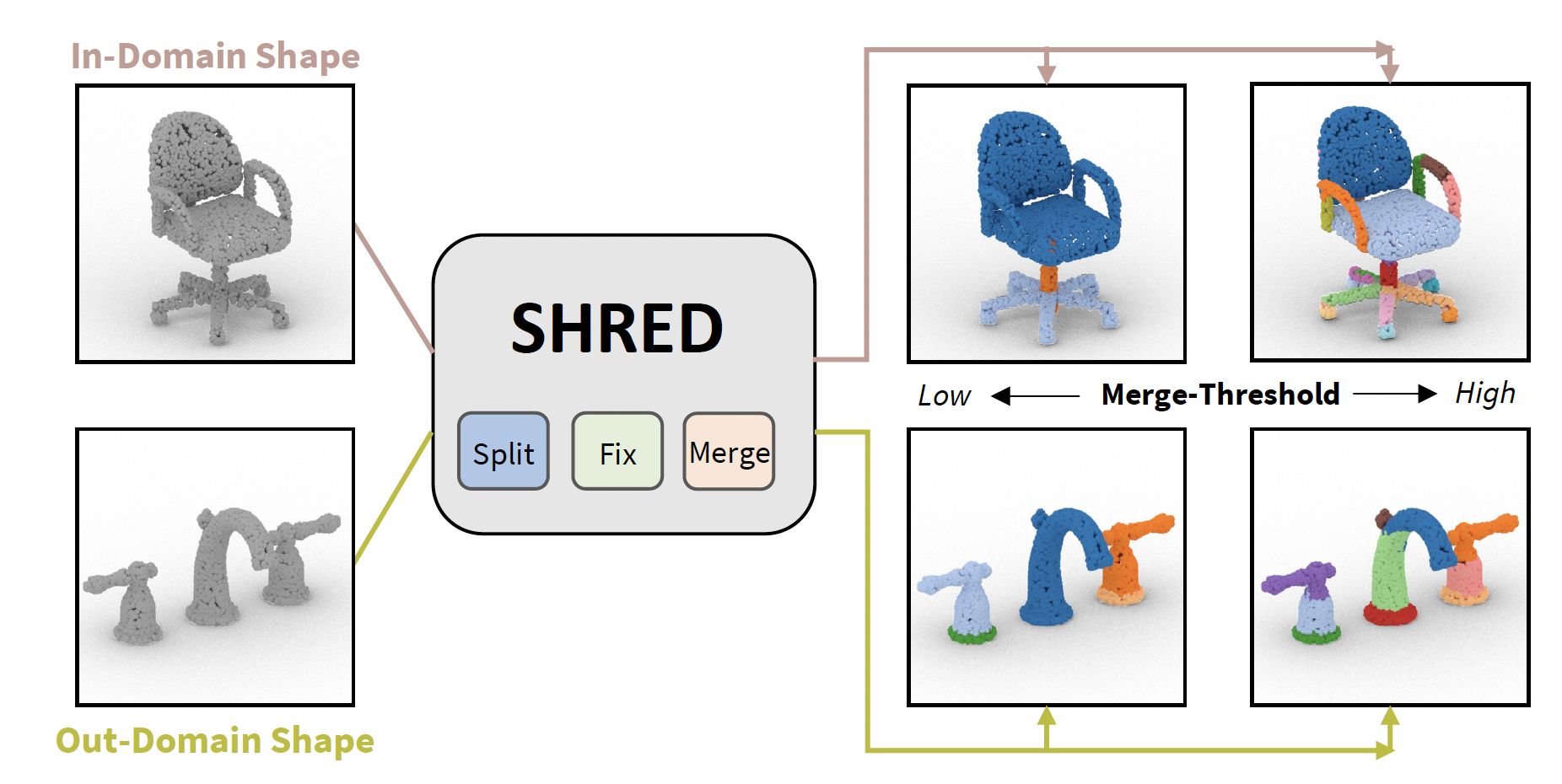By R. Kenny Jones, Aalia Habib, and Daniel Ritchie
SHRED is a method for 3D SHape REgion Decomposition that consumes a 3D shape as input and uses learned local operations to produce a segmentation that approximates fine-grained part instances. A merge-threshold parameter can be adjusted to change decomposition granularity depending on the target downstream application
Presented at Siggraph Asia 2022.
@article{jones2022SHRED,
title={SHRED: 3D Shape Region Decomposition with Learned Local Operations},
author={Jones, R. Kenny and Habib, Aalia and Ritchie, Daniel},
journal={ACM Transactions on Graphics (TOG), Siggraph Asia 2022},
volume={41},
number={6},
pages={Article 186},
year={2022},
publisher={ACM}
}
To run SHRED, please take the following steps. Tested with python 3.8, cuda 11, PyTorch 1.10 and Ubuntu 20. Steps should be run from inside the code directory.
- Create a new conda environment sourced from environment.yml, by running:
conda env create -f environment.yml
- Verify the binaries for the pointNet++ models are working, details in the methods/pointnet2 folder README
To rerun our experiments, or retrain SHRED's models:
-
change the USER variable in make_dataset.py to point to a version of partNet
-
run python3 all_data_script.py -- this will generate dataset information for all categories we run experiments on
We provide vis_script.py which writes region decompositions predicted by different methods to point cloud objs, where each region is given a random color.
To run vis_script.py, first download save_results.zip, put it in the code directory, and unzip it. This file holds test-set predictions for different region decomposition methods over 10k points for each shape.
Then, for instance, to visualize the first chair of the test-set for each method run:
python3 vis_script.py -inds 0 -c chair
We include checkpoints of trained SHRED models in code/def_models. To create a region decomposition for a new mesh input.obj, run the following command:
python3 shred_mesh.py input.obj out.obj -mn_mt {MT}
This will save a colored point cloud to out.obj, where each region is given a different color. MT sets the merge-threshold, if not set the default is 0.5
We provide evaluation logic in make_results.py to run method inference on test-set shapes from PartNet. Use the -mt flag to choose the SHRED method:
python3 make_results.py -mt srd -mn_mt 0.5 -svn {NAME}
The metric outputs of make_results.py will be written to results/ and the per-point predictions will be saved to save_results/ , where the name is set by the -svn {NAME} flag.
To test this script is working you can use the flags ' -mx 1 -indc chair -otdc , ', which will run inference for a single chair test-set shape.
To retrain the split network, run:
python3 train_method.py -mt split_net -en {EXP_NAME}
To retrain the fix network, run:
python3 train_method.py -mt fix_net -en {EXP_NAME}
To retrain the merge network, run:
python3 train_method.py -mt merge_net -en {EXP_NAME}
Please see README in code/methode/baselines for information on how to evaluate and retrain the baselines we compare against.
-
The code directory contains all code for our models and experiments. Method implementations can be found in the code/methods directory.
-
The data folder is where datasets go, after creation.
-
The hier folder contains the shape grammars from PartNet that we use to parse PartNet data.

